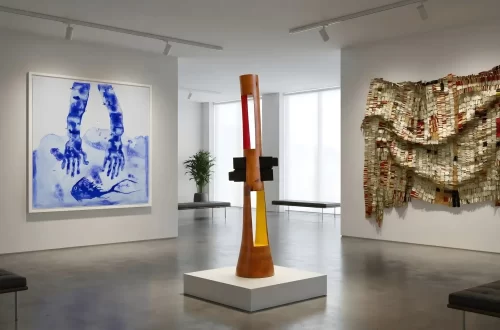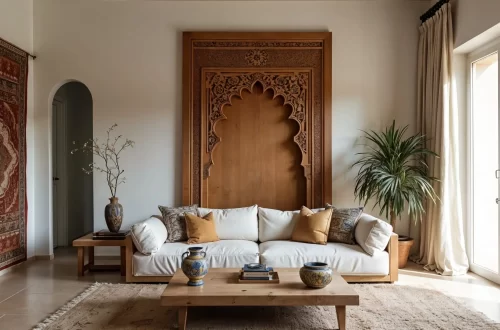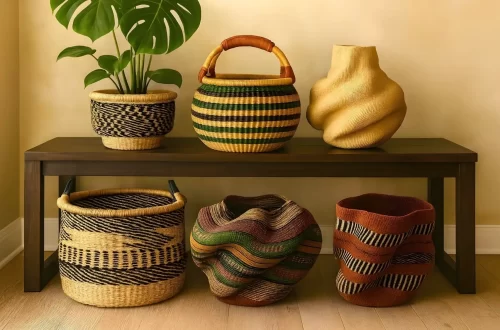I love African bowls for their quiet power. They can be rustic or sculptural, simple or dramatic—but whatever the look, they always carry a type of strength that is difficult to put into words. Yes, they’re beautiful—but more than that, they bring a sense of place, story, and community without ever trying too hard.
If you’re after something that feels intentional, inviting, and rooted in tradition, then African bowls are it. Let me show you some of my favorites.
Jump to:
7 Collectible African Bowls That Turn Heads
The featured picks aren’t sponsored—just pieces we truly love.
1. Fulani Wooden Bowl with a Striking Patina
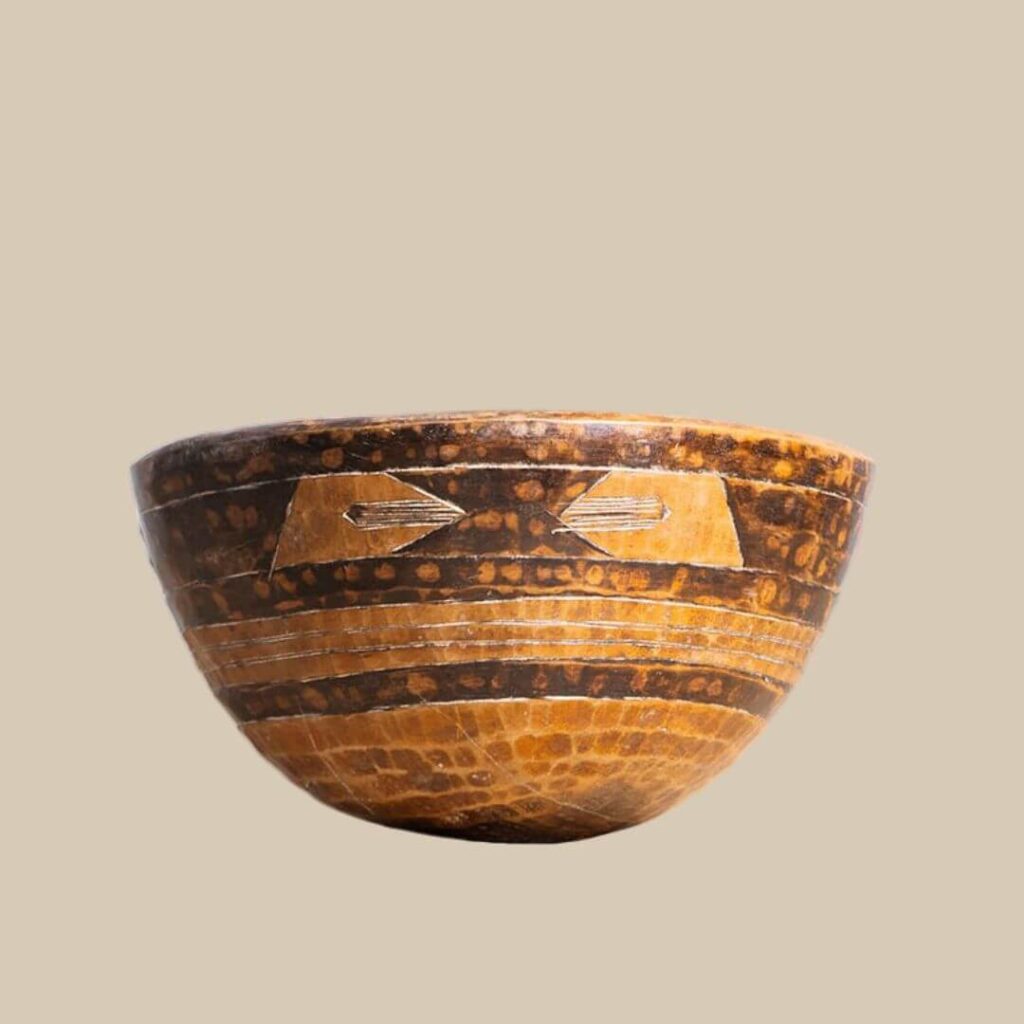
The Fulani people, nomadic herders of West Africa, carved these from a single block of wood. Originally used to collect curdled milk or store food on the go, Fulani bowls often feature rhythmic, geometric carvings and are sometimes bound by metal staples—a beautiful representation of their resilience.
Style tip: I love these in shelf displays. They bring texture and sophistication to the vignette, especially when their wear is left visible.
Our Pick: Vintage Fulani Bowl, The Wanderlane
2. Baule Bowl, Raw and Carved
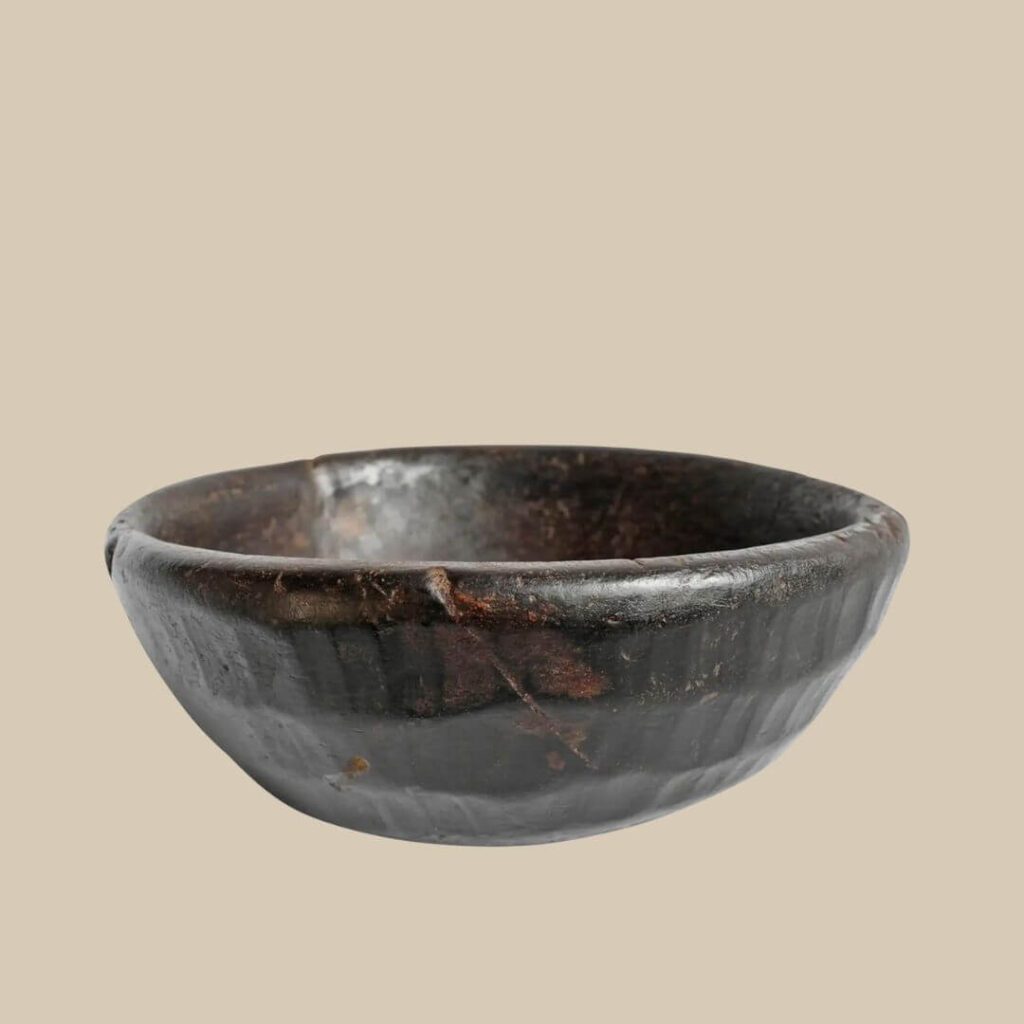
The Baule people of Côte d’Ivoire are widely admired for their craftsmanship—especially their masks and carved vessels. Baule bowls are also one of their striking artifacts. Often made from dense Iroko wood, they proudly show knife marks that give them a raw, sculptural feel.
Style tip: I like styling one on a coffee table with a chunky beaded necklace draped along the rim.
Our Pick: Baule Bowl, Misgana African Art
3. Sculptural Turkana Bowl
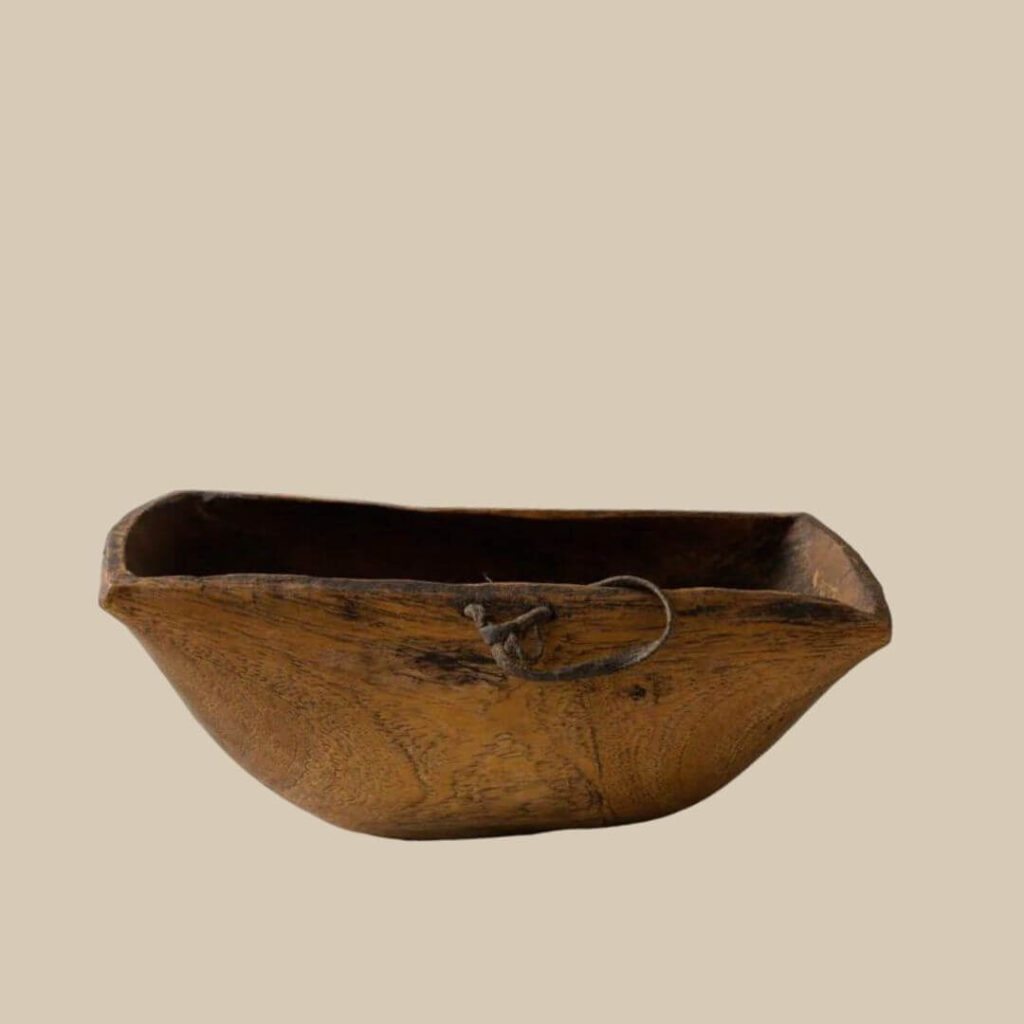
Hand-carved by the nomadic Turkana women in northwest Kenya, these bowls are deeper and more vertical than most. Some have an oval rim, others’ lean rectangular—but all have a distinct, architectural silhouette.
Style tip: I love placing one on a side table. It reminds me of travel, and the sculptural shape alone draws the eye.
Our Pick: Turkana Bowl 45, Khayni
4. Wide and Shallow Lozi Bowl
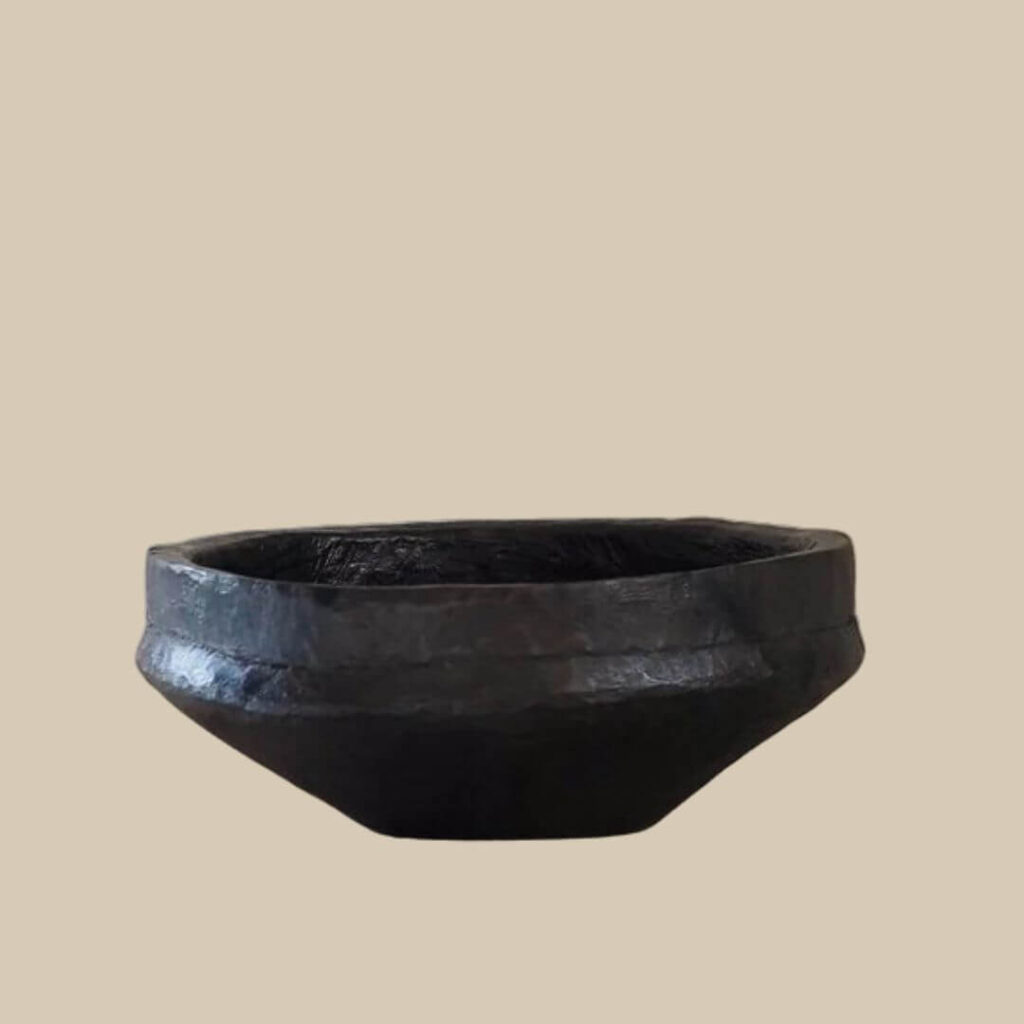
The Lozi people of Zambia are characterized by their close connection to the Zambezi River. They used these shallow bowls to serve meals such as buhobe, a maize porridge with fish still central to their cuisine. Designed for communal moments, Lozi bowls carry an inviting spirit.
Style tip: Centered on a dining table, Lozi bowls hint at shared dishes and lingering conversations. It is my favorite way to style them.
Our Pick: Lozi Bowl 17, Khayni
5. Tutsi Bowl, Mended but Whole
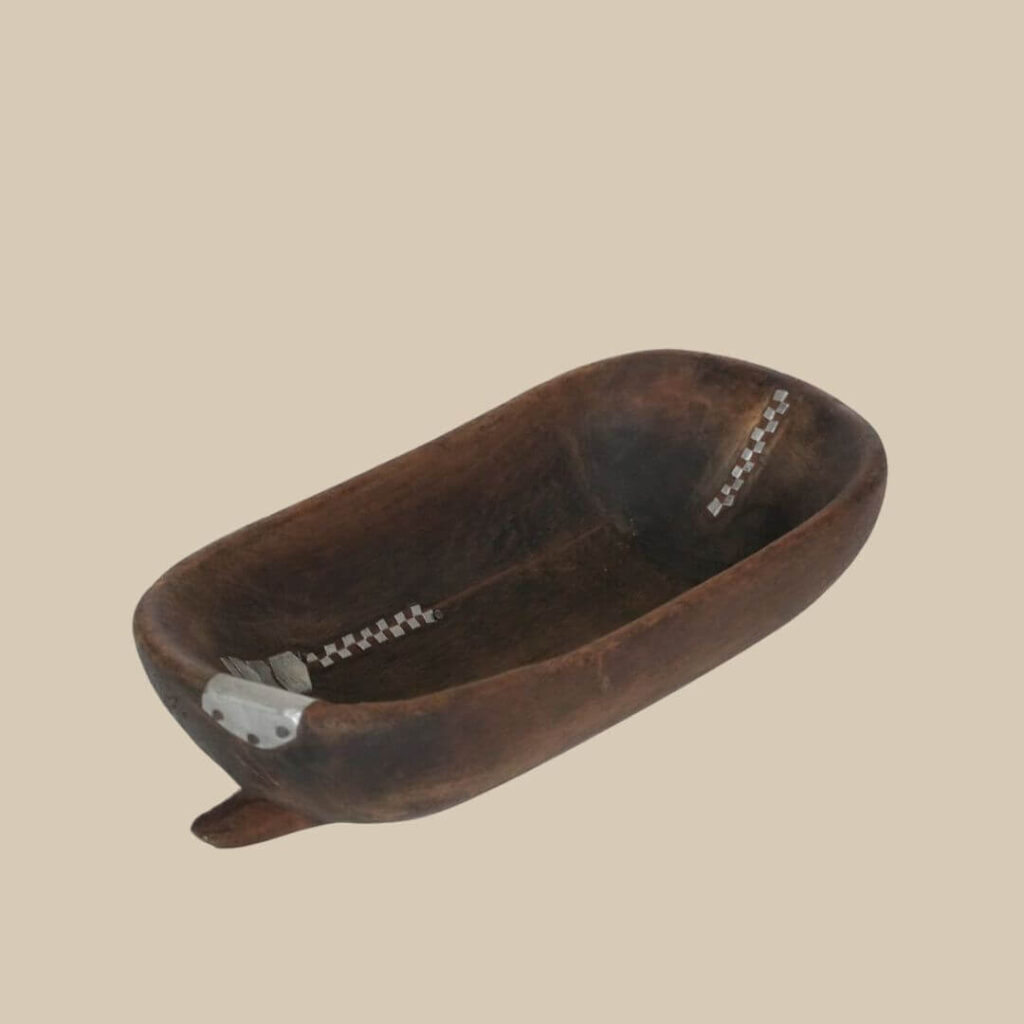
Crafted in Rwanda and Burundi, Tutsi bowls carry the complex story of their people. They have graceful, scooped forms, often repaired with stitched metal along the cracks. It’s a practice that speaks volumes—resilience, resourcefulness, and care.
Style tip: Their subtly textured interiors make them ideal for wall displays, where the curves and repairs can be appreciated from every angle.
Our Pick: Tutsi Bowl, Misgana African Art
6. Tuareg Bowl, Patterned by Hand
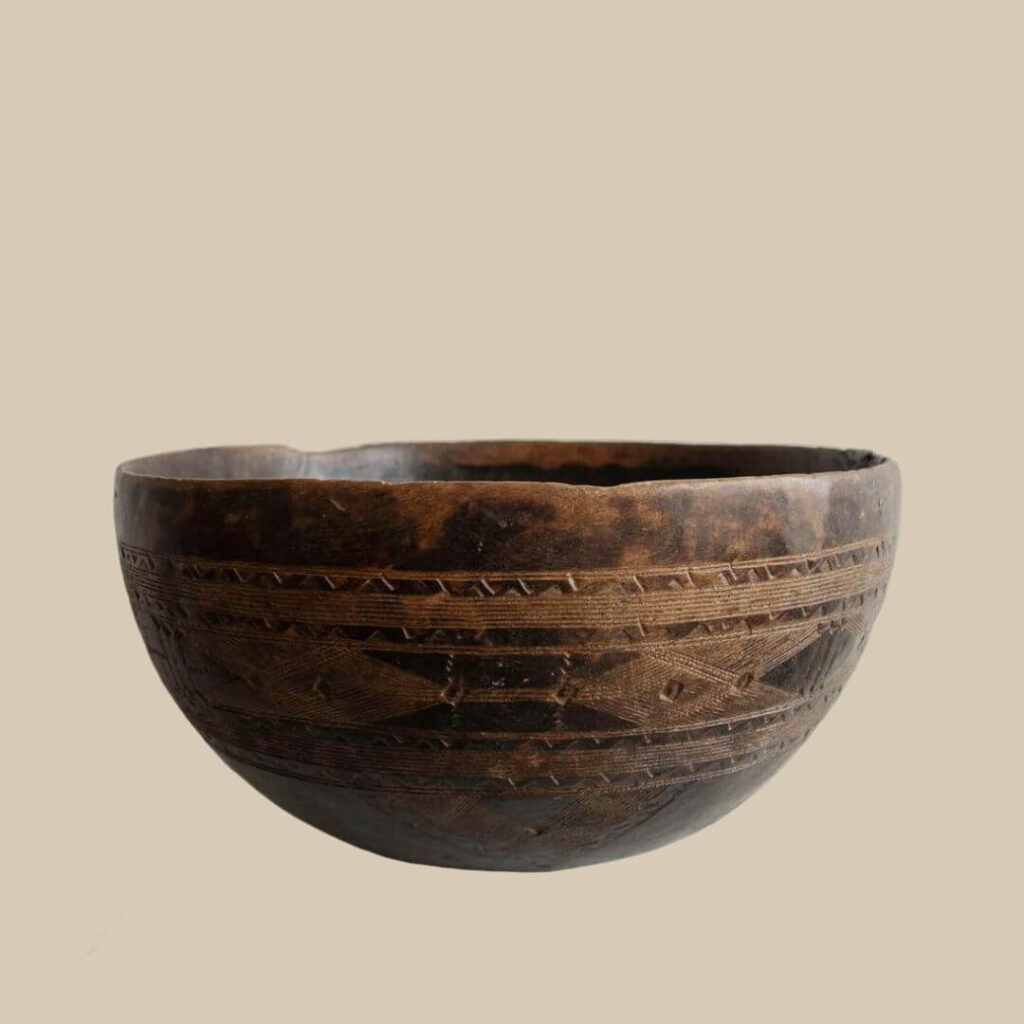
Made by the nomadic Tuareg people of the Sahara, these bowls are sculptural art. The Tuareg are known for their intricate jewelry and leatherwork, and these bowls echo that same refined design—often with engraved symbols lining all around.
Style tip: I prefer styling one on a console table, where it can sit in its own thoughtful vignette.
Our Pick: Vintage Tuareg Bowl 48.3, Botanical Boys
7. Shaped to Hold: The Gurage Bowl
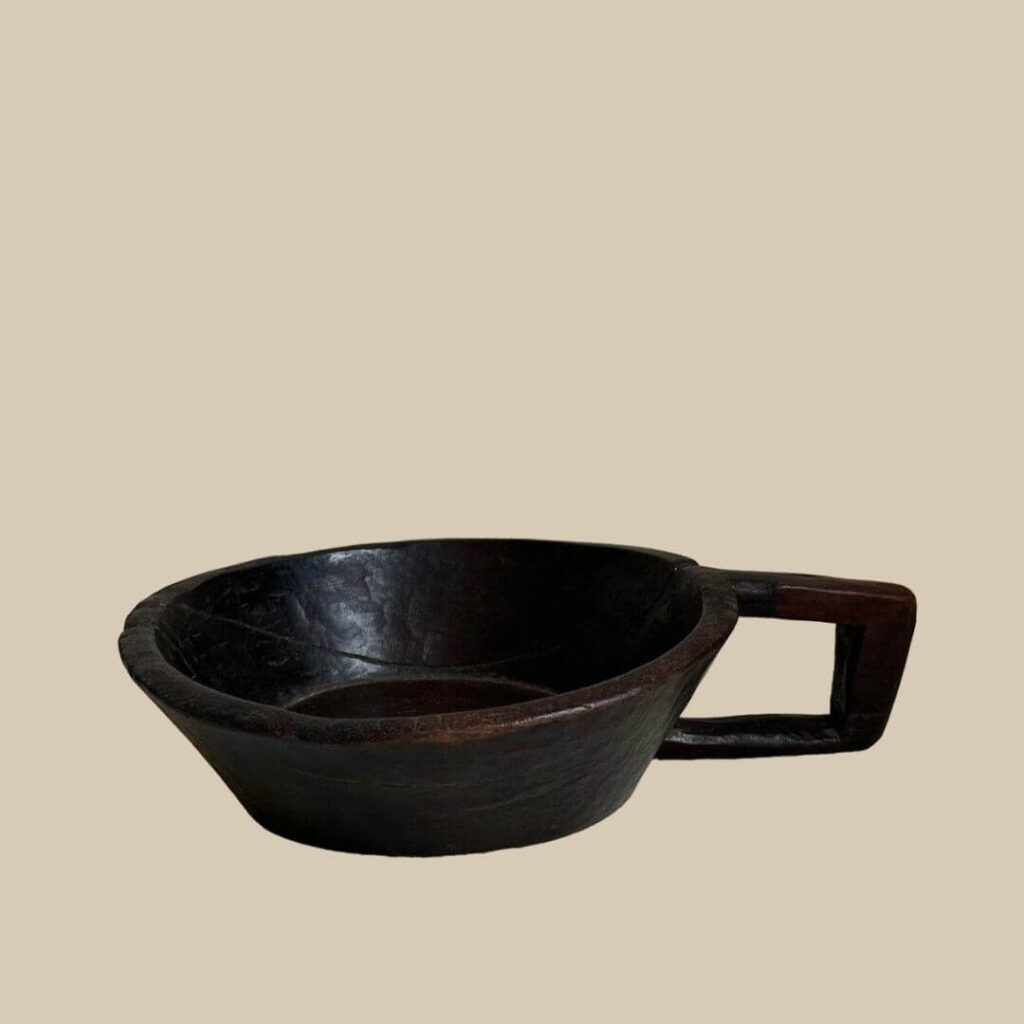
The Gurage people of Ethiopia—renowned for their terraced agriculture and skilled woodcarving—made these bowls from soft sholla wood. The geometric handles are both practical and expressive, reflecting a distinct visual language. Many date back to the mid-20th century, making them sought-after collector’s pieces.
Style tip: Gurage bowls deserve center stage on a table or shelf, where that bold handle can do all the talking.
Our Pick: Gurage Bowl, Misgana African Art
Elegant Ways to Show Off African Bowls Around Your Home
Center Your African Bowl on the Dining Table
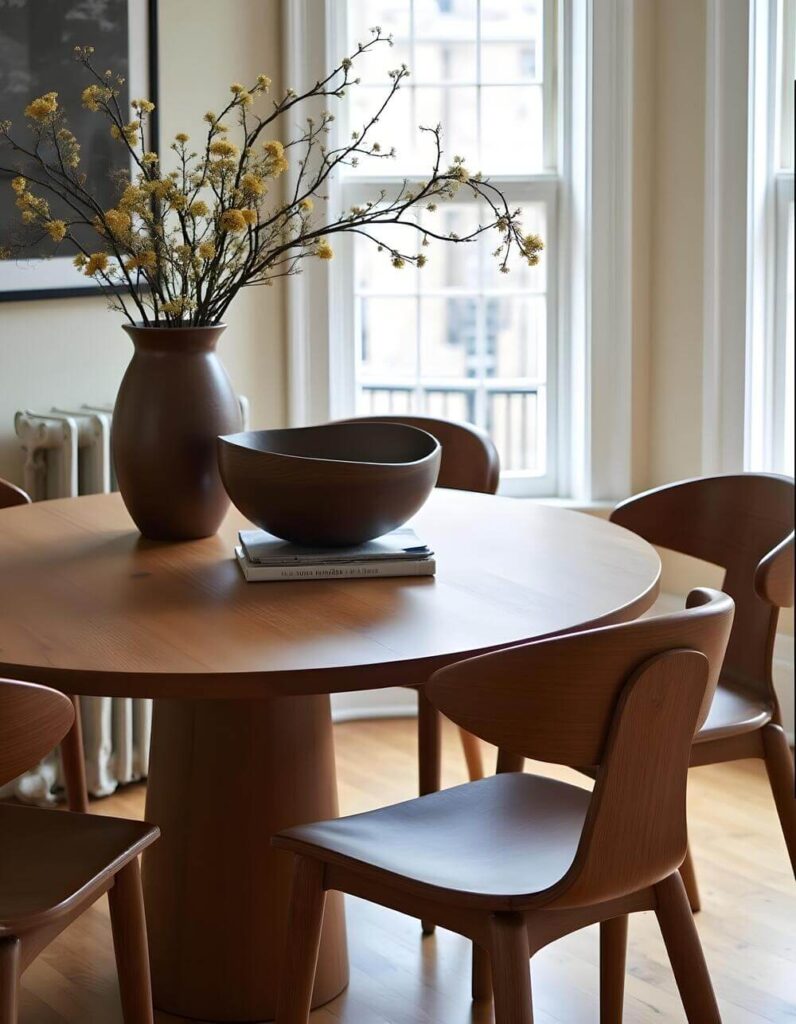
A large African bowl at the center of a dining table makes the room feel considered, even when not in use. It echoes the idea of sharing food—something that’s essential across so many African cultures. I especially love this look when the bowl is paired with a low ceramic vase or left empty to highlight its form.
Add Warmth to a Cozy Corner
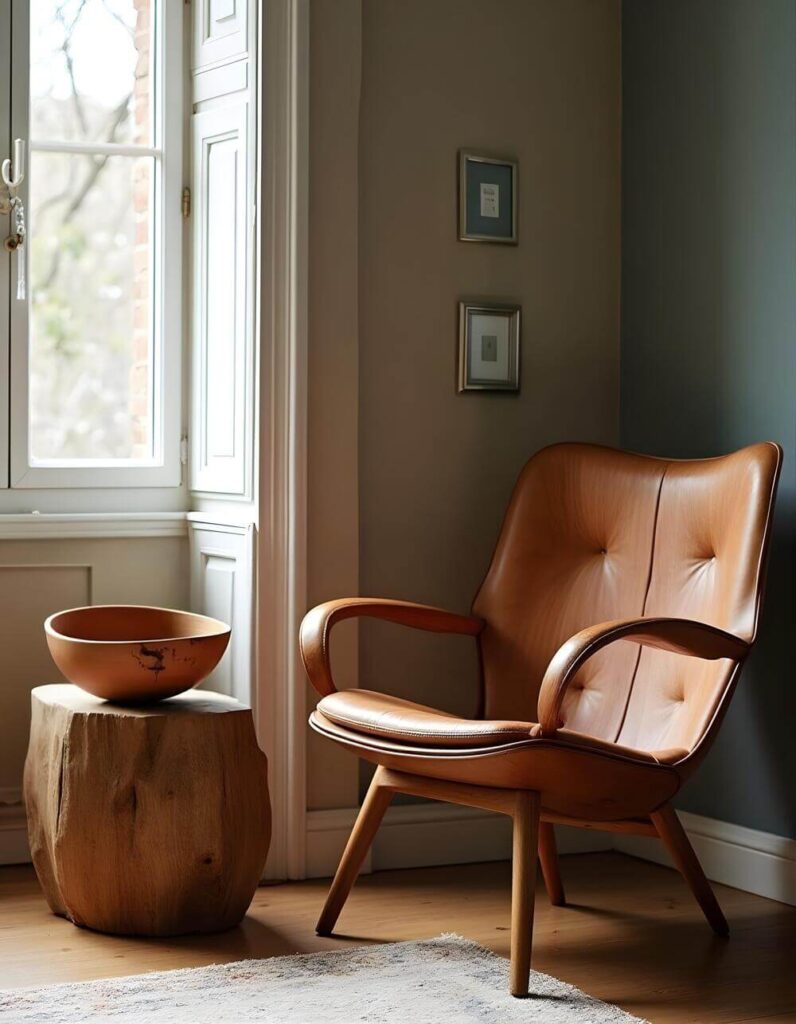
On a small side table in a reading nook, a hand-carved bowl brings quiet warmth. It softens the space and adds a lived-in feel, especially when paired with a book or a textured throw. These are the kinds of details that make a house feel like a home.
Let a Larger Bowl Anchor a Console Table
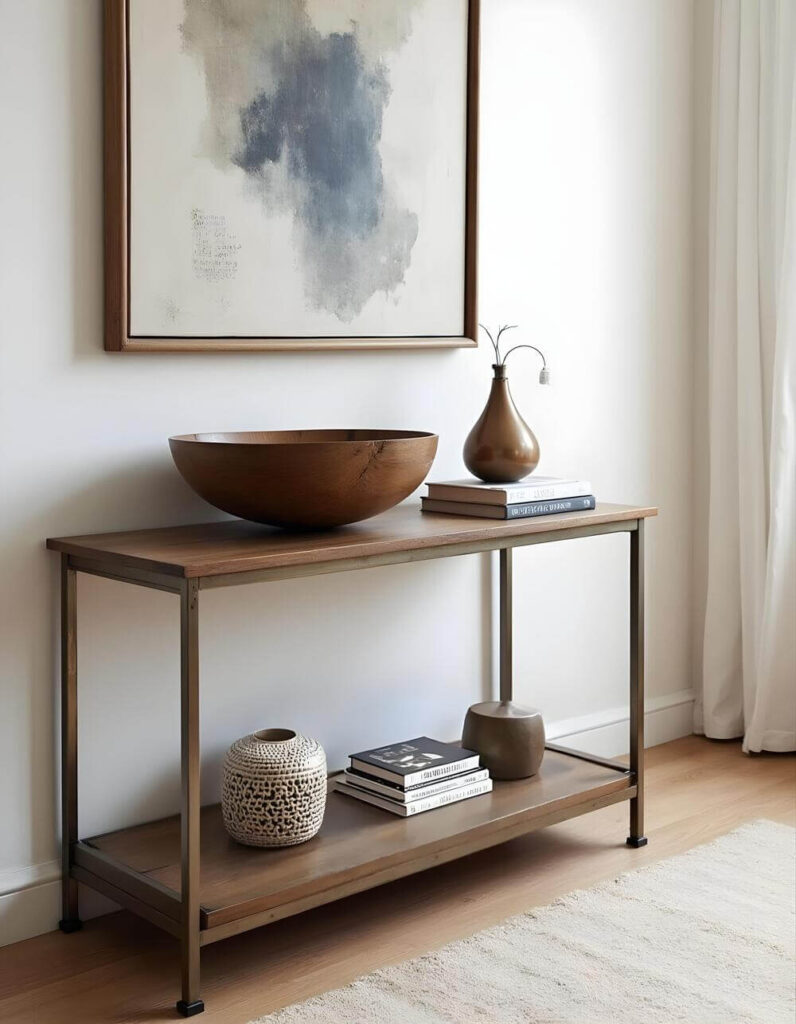
Console tables are perfect for larger bowls. Their weight and texture ground the surface without overwhelming it. I often choose bowls with strong shapes here—ones that make you pause for a second look.
Place African Bowls on a Decor Shelf for Balance
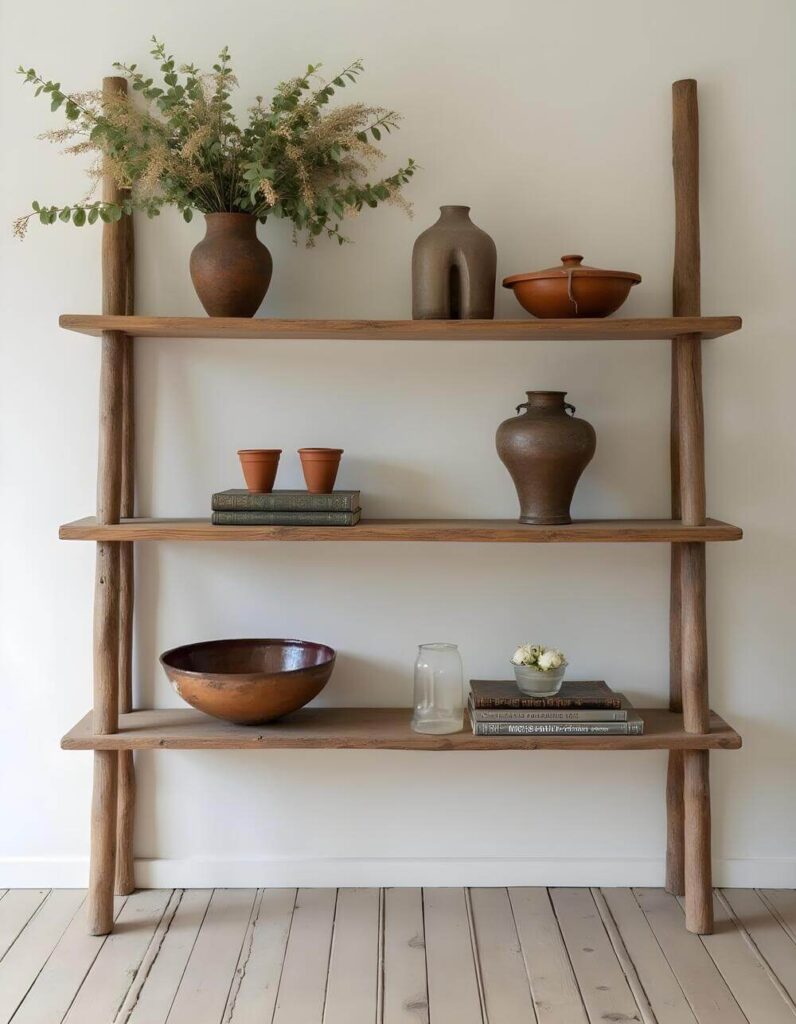
On a shelf, an African bowl adds a refreshing shift in silhouette. It breaks up the usual mix of books and frames, introducing both form and function. Medium-sized bowls work best here—big enough to catch the eye, but not so large they dominate the whole display.
Stack Your African Bowl Over Coffee Table Books
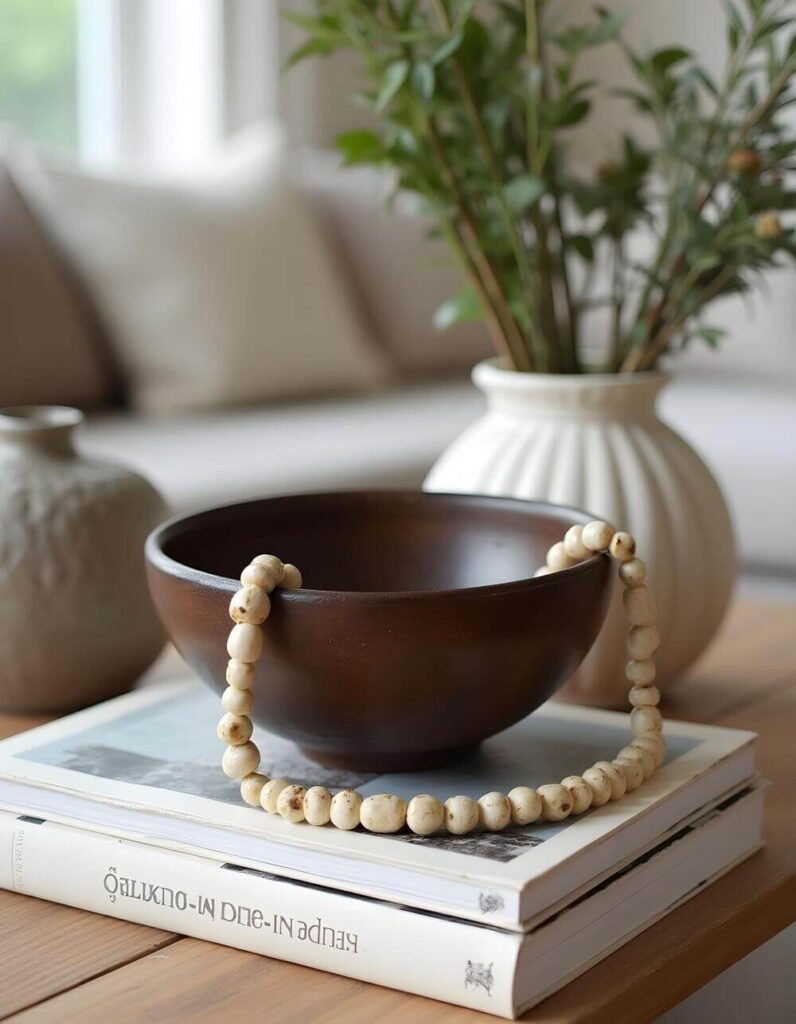
For your living room coffee table, layering is everything. A well-placed bowl over stacked books—with maybe a small plant or candle nearby—just works. I especially love adding an artisanal bead necklace to the bowl’s rim. It turns into a mini scene that feels collected and styled.
Hang It Up for Bold Impact
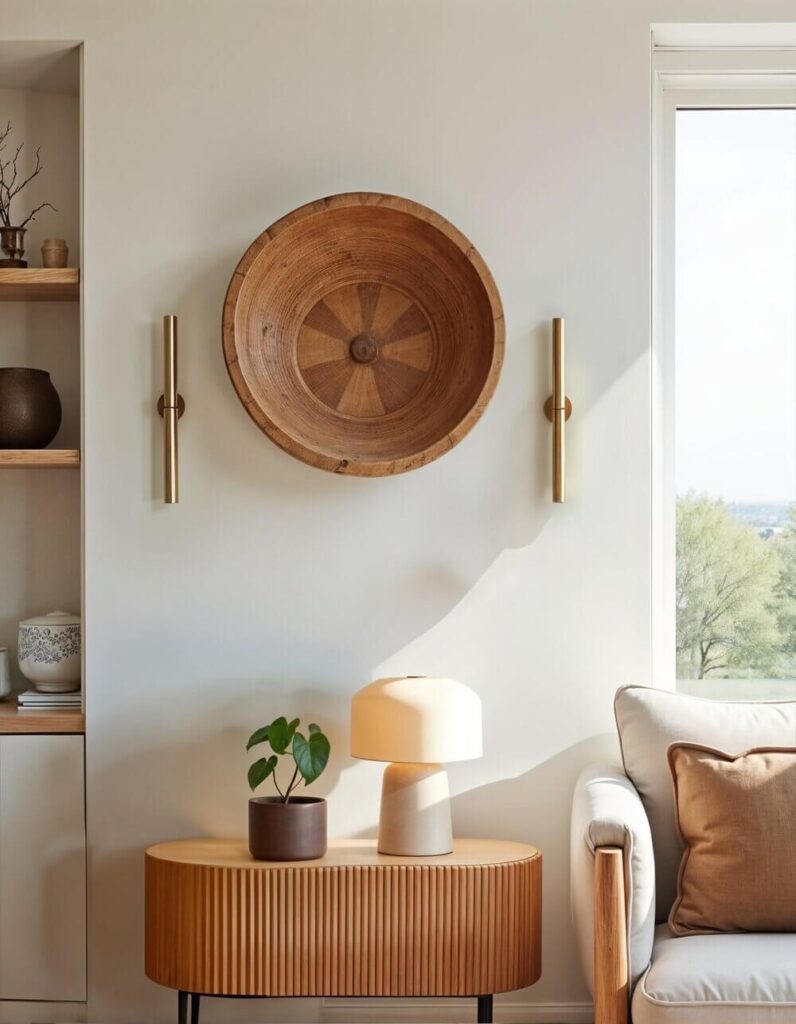
When you really want a bowl to shine, mount it on the wall. This not only highlights its interior craftsmanship but also plays with dimension in your space. I’ve done this in an entryway before, flanked by a pair of sconces. It’s simple but memorable.
You May Also Like: 5 Beautiful African Wall Decor Ideas for a Standout Home
African Bowls Bring Something Rare to Modern Interiors
A quiet beauty rooted in usefulness and memory. They’ve been used to carry, serve, share, and store for generations. But in today’s homes, they take on a new role: grounding a space, sparking curiosity, and keeping tradition in view.
And that’s what I love about them. They’re timeless, but never static.
Continue your vintage journey: African Bronze Art | From Ancient Kingdoms to Modern Homes




